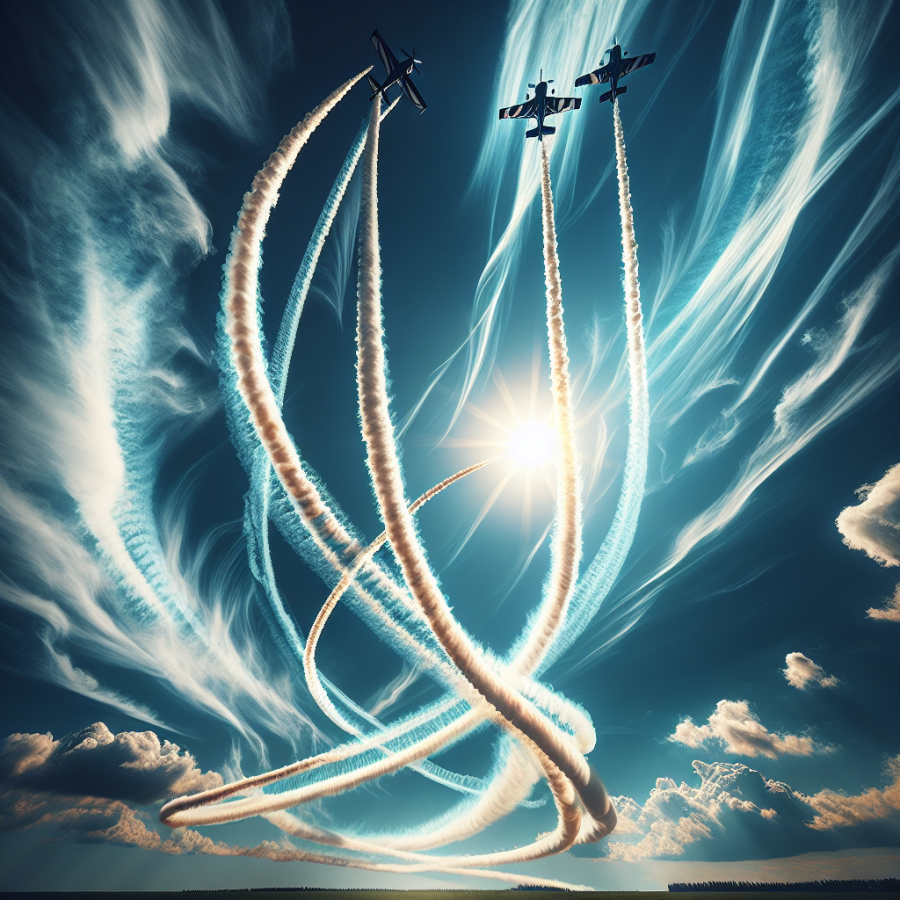The Aerial Ballet: Understanding the Dynamics of Precision Flight Maneuvers
As we delve deeper into the captivating world of precision flight maneuvers, it becomes apparent that the skill and concentration required to perform these aerial feats are nothing short of extraordinary. Pilots practicing precision aerobatics must have an intimate understanding of their aircraft's capabilities and limitations, as well as a finely tuned awareness of the forces that govern their maneuvers. This ballet in the sky is a complex dance between pilot, machine, and the fundamental laws of physics.
The Fundamentals of Flight Dynamics
At the core of precision flying is the mastery of flight dynamics. Pilots must be well-versed in the three primary axes of rotation for an aircraft: the roll axis, the pitch axis, and the yaw axis. Maneuvers revolve around these axes, and adept control is crucial for a precise performance. These axes intersect at the center of gravity, where the aircraft’s weight is balanced in all directions, contributing to its stability and maneuverability.
Flight Control Mastery
To execute precision maneuvers, pilots use a combination of the aircraft's control surfaces: ailerons for roll, elevator for pitch, and rudder for yaw. Mastery of these controls allows for the execution of complex movements such as loops, rolls, spins, and hammerheads. Each control input must be deliberate and measured, with the pilot maintaining a constant awareness of the aircraft's attitude, speed, and trajectory.
Energy Management
Another vital concept in precision aerobatics is energy management. Pilots must manage the aircraft's kinetic energy (speed) and potential energy (altitude) to maintain the momentum necessary for maneuvers. For instance, during a loop, a pilot converts speed into altitude on the upward arc and then reverses the process on the descent. Mismanagement of energy can lead to insufficient speed or altitude, compromising the safety and execution of the maneuver.
G-Force and Physiological Factors
The intense changes in velocity and direction during aerobatic maneuvers subject pilots to high levels of G-force. These forces can dramatically affect a pilot's body, causing disorientation and a condition known as G-LOC (G-induced Loss Of Consciousness). To combat this, pilots undergo specialized training to increase their G-tolerance and often wear special G-suits that help counteract the effects of these forces.
Precision in Practice: Choreographing the Flight
Precision flight maneuvers are often strung together in a sequence, creating an aerobatic routine that showcases a pilot's skill. Each sequence is carefully choreographed, with every movement planned and practiced.
Read also:
Navigating Winter Wonderland: The Thrill of Skibobbing
Mastering the Skies: Techniques and Training for Precision Aerobatics
Precision aerobatics is a highly specialized field within aviation that requires exceptional skill, deep understanding of aerodynamics, and intense training. Pilots who participate in this demanding sport must hone their abilities to execute complex maneuvers with exactitude and grace. In this exploration of the techniques and training required for mastering the skies, we will delve into the various aspects that contribute to the proficiency of top aerobatic pilots.
One of the foundational techniques in precision aerobatics is developing a keen sense of orientation. Pilots must be able to maintain spatial awareness at all times, even when their aircraft is flipping, rolling, or spinning. This is often achieved through relentless practice and exposure to various attitudes and positions of the aircraft. Simulators can be helpful in this regard, but nothing replaces actual flight time. Building up flight hours in a variety of conditions and attitudes helps pilots to internalize the feel of their aircraft in three-dimensional space.
Training for precision aerobatics often begins with mastering basic maneuvers such as loops, rolls, and stalls. Each of these fundamentals serves as a building block for more complex figures. For example, learning to perform a clean loop with a constant radius requires a pilot to manage energy, control inputs, and understand the impact of aerodynamic forces throughout the maneuver. From there, pilots can begin combining elements to create figures like the Immelmann turn or the Cuban eight.
Another crucial technique is energy management. Throughout every maneuver, the pilot must be acutely aware of the aircraft's speed, altitude, and potential energy. Successful aerobatic routines depend on the pilot's ability to convert energy from one form to another efficiently, maintaining the necessary airspeed for maneuvers while also positioning the aircraft accurately within a defined volume of airspace known as the aerobatic box.
Controlling an aerobatic aircraft with precision also demands a firm grasp of aircraft systems and limitations. Pilots must understand the fine details of their aircraft's performance envelope, such as how it responds to control inputs at different speeds, the effects of gyroscopic forces at various angles of attack, and the structural limits that govern what maneuvers can be safely performed.
Mental conditioning and visualization techniques are further key aspects of aerobatic training. Pilots often mentally rehearse their routines, visualizing each figure and the required control inputs to perfect their performance. This mental practice can help in maintaining composure during the high G-forces and disorienting nature of aerobatic flight.




